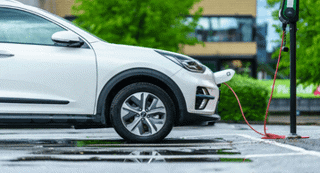
Lightfoot is launching its traffic-light based driver behaviour system for cars.
The company claims the in-cab driver behaviour device has helped van fleet managers cut fuel bills by up to 20% whilst reducing accidents by up to 60%. Lightfoot provides visual and voice prompts to help proactively fix driver behaviour at source, aiming to help drivers adjust in 'real time'.
Lightfoot changes driver behaviour by giving the driver two opportunities to remedy any short-term poor driving habits (indicated by warning prompts), resetting the gauge if an immediate improvement in driving style occurs. Only if a third warning prompt is received will a ‘driving event’ (or ‘violation’) be recorded and reported to the fleet manager. Although rare, by highlighting these violations fleet managers can quickly identify those drivers that would benefit from additional driver training to get the most efficiency from their vehicle and to reduce the likelihood of avoidable accidents.
Each week, the system emails the fleet manager a straightforward table showing its drivers’ performance against the levels agreed with the fleet manager; the report itself requires no further analysis saving fleet managers significant amounts of time.
Mark Roberts, managing director of Ashwoods Lightfoot said: “Lightfoot is first and foremost a training tool. Because the system puts the driver in control it often results in positive competition among drivers that want to be the most efficient and safest driver.
"Many of our clients reward and recognise their drivers for their performance, so it becomes a positive relationship where drivers constantly strive to improve their driving style. The result is more competent drivers, greater fuel savings, fewer accidents, reduced wear and tear, lower CO2 emissions, lower insurance premiums and virtually zero admin for the management team.
"It’s a win, win situation on multiple levels.”
Roberts added: “By directly influencing driver behaviour through instant in-car prompts we slash the amount of data received by fleet managers and we overcome the very real problem of time lag between driver action and management feedback; which occurs with traditional telematics.
"Instead, we improve driving style in the moment and our simple weekly report provides at-a-glance insights that are of immediate use and do not require fuller analysis.”

















Login to comment
Comments
No comments have been made yet.